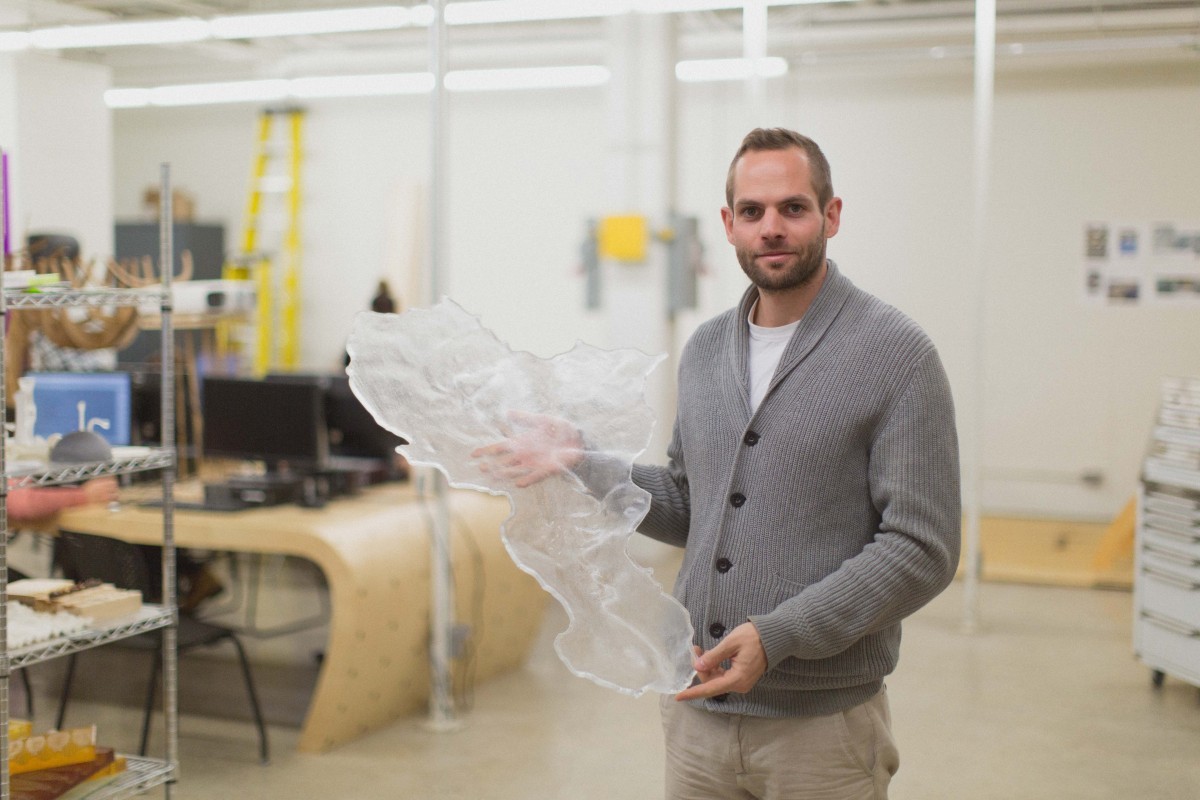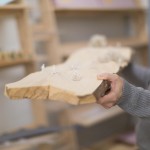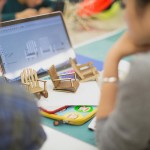
Jason Hare with casting of photo-grammetrically captured landscape // Photo by Joseph Visser
Digitizing novel approaches between design and fabrication
Faculty of Architecture's FABlab drives innovation through old and new
Most individuals can identify with the taxonomic definition of Homo sapiens, ‘the wise.’ Though with the advent of technology come new tools that allow individuals to reach out beyond themselves and connect with the world in novel ways. These tools act as a lens to see the world through, a lens that challenges normative standards of practice and methods in which daily lives unfold. Digital fabrication is one such lens.
The relationships forged between the mind, the body and the tool is one of great interest to myself. In the past decade there has been an explosion of digital tools introduced to the design disciplines that have had a large impact on the conceptualization of forms. These tools have taken on a variety of forms ranging from computational language structures, software modelling methods and computer numerically controlled fabrication devices. All of which have suggested future methods of construction, some novel and some novelty. I am specifically interested in processes that have the potential to manifest themselves as working methods in the field of design and construction. The excitement in any technology driven environment is the ability to move novel away from novelty, and towards unique methods which empower individuals in their given fields of study.
My research lies between the fundamental agents that help digitize the material and
materialize the digital. Without attempting to work between the physical and digital realm, it becomes exceedingly difficult to imagine digital geometry as a physical material and ultimately move beyond the screen. As most of the tools in the digital fabrication lab are cross-disciplinary, a level of play is required to uncover what potential overlaps are hidden within each agent. Once uncovered these are then cultivated as meaningful ways of communication between designers, fabricators and builders.
The caesium that used to exist between the digital drawing and the materialized form continues to collapse into a narrow gap that allows for the direct translation between digital space and the physical fabrication of material. With this collapse it has become critical for designers to understand the capabilities of rapid prototyping equipment as a means of conceptualizing form and not just the production of formal concepts. In this case the interest lies within the tool as an agent of formal concepts that play an active role in the final outcome.
Finally, I am deeply invested in meaningful interactions with technology and researching the ways in which digitally driven tools can seamlessly interface with existing methods of design while pursuing novel means of fabrication. In an earnest effort to uncover the sapien ‘the wise’, faber ‘the maker’ and ludens ‘the player’ of all agents within the realm of digital fabrication, consisting of both human and machine.
This article appeared in the Winter 2016 edition of ResearchLIFE.
Research at the University of Manitoba is partially supported by funding from the Government of Canada Research Support Fund.








